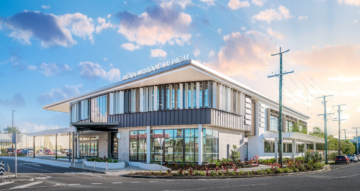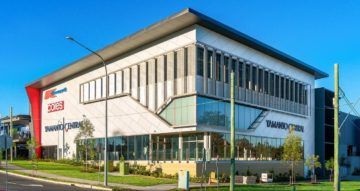DMA Partners predict that retirement living and retail mixed-use developments will become an essential component to responding to the changing needs of Australia’s ageing population.
Currently 3.8 million Australians are over the age of 65 with this figure projected to rise to 8.7 million by 2057, representing a quarter of Australian consumers.[1]
DMA Partners’ Managing Director Ryan Andersen said developers needed to respond to Australia’s changing demographics with new integrated options.
“The opportunity is clear, Australians living in retirement housing need access to important services like health care and allied health locally,” Mr Andersen said.
“The characteristics of Australia’s senior population are changing.
“We believe the straight, suburban retirement village model will change significantly in the future. More and more elderly Australians are demanding a more integrated, better serviced retirement living options with more opportunities for fun, more retail choices and a better lifestyle offering.”
Projects like Aveo Newstead, a retirement living tower in the Brisbane inner suburb of Newstead, which includes an onsite bar and restaurant, a private movie theatre, a bowling green, gymnasium and hair and beauty salon, demonstrates how far retirement living offerings have come.
In addition to Aveo’s internal facilities, the Gasworks precinct offers both convenience shopping and some fantastic dining options.
“The mixed-use model is not new, but we have seen a lot of residential buildings with a few shops scattered underneath with apparently little thought to the mix and offer to the residents above. This doesn’t offer the critical mass of uses provided by the larger centres, that include a wider range of retail and services to improve the amenity available to the residents,” Mr Andersen said.
High-quality projects like this can meet the needs of Australia’s baby boomers, who have higher levels of wealth than previous generations and therefore more expensive tastes.
Research has shown that older boomers hold 30 per cent of the wealth in Australia, despite only representing 12 per cent of the population.[2]
“As high-wealth boomers enter retirement, the opportunity exists to create quality precincts and environments that are connected to retail and services that can cater to their extensive purchasing power and desire to socialise,” Mr Andersen said.
“That’s the crux of what makes these opportunities so exciting.
“Not only are mixed-use developments meeting the need for more and better retirement living accommodation, they also offer developers an opportunity to place a new community literally on top of an existing retail precinct.
“Adding retirement living to existing retail assets enables property owners, tenants and residents to benefit from the synergies these mixed-use developments can offer.
“Retail centres provide retirees with shopping and recreation options close to home and existing centres often benefit from great public transport connections.
“Developers find the low parking rates required for retirement living developments also make these an attractive addition to a retail centre. Add the existing air rights that retail centres often enjoy, and it’s clear why this really is a model that has a big future.
“A number of our clients have realised that having a large land holding occupied by a one to two storey building is not taking full advantage of the site and the opportunities to capitalise on this new format are huge.
“In some council areas, such as Brisbane, where policymakers are attempting to incentivise retirement accommodation development, developers will also be entitled to infrastructure charge reductions of 33 per cent until December 2019.
“Developers can expect better yields delivered by the synergies that these developments offer, and residents can expect a better lifestyle.
“These factors come together to make these developments a really attractive proposition, for developers, for retired Australians and for the community more broadly.”
[1] Australian Institute of Health and Welfare, 2018, Older Australia at a glance
[2] Mccrindle, Australia’s generations by wealth and income




